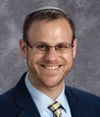The Young Rabbi Shimon Bar Yochai
On Lag Baomer it is traditional to commemorate the yahrtzeit of Rabbi Shimon Bar Yochai. I'd like to take a different angle and consider the little we know of him as a young man.
The Gemara (Berachot 27b-28a) records the classic power struggle between the nasi Rabban Gamliel and Rabbi Yehoshua concerning the status of the evening prayer as optional or mandatory, with the fallout of Rabban Gamliel's having been deposed as Nasi. As the story unfolds, the agadta explores the motifs of exclusivity and inclusivity. In his administration of the then-closest equivalent to the contemporary Talmudic yeshiva, Rabban Gamliel imposed rigorous admissions standards, whereas others proposed a more tolerant policy, accepting a far wider range of students to the Beit Midrash. The Gemara goes so far as to cite a debate as to whether 400 or 700 benches were added to the Beit Midrash on the day Rabbi Elazar Ben Azarya was appointed Nasi in Rabban Gamliel's stead. Whichever position is correct, the point that the floodgates opened is clearly made. Indeed, the Gemara asserts that throwing open the doors ushered in a day of Torah study of unparalleled accomplishment, which the Gemara denotes "bo ba-yom," a singular day.
In the end, although Rabban Gamliel is largely restored to his post - he serves as nasi three Shabbatot per month, and Rabbi Elazar Ben Azarya fills the position on the fourth - the Gemara ultimately makes it clear that Rabban Gamliel's unyielding position is overruled in favor of a more democratic view. The larger thrust of the Gemara is thus quite clear.
And yet, there is a seemingly minor detail that remains opaque. Curiously, the Gemara introduces the story by noting, "Ma'aseh be-talmid echad, there was an incident concerning one student." That talmid asked Rabbi Yehoshua whether Maariv is mandatory or optional, and Rabbi Yehoshua sided with the latter view. Rabban Gamliel got wind of Rabbi Yehoshua's opinion, which directly contradicted his own ruling on the matter, and embarrassed Rabbi Yehoshua publicly, leading to the story we outlined above.
Perhaps even more unusual, the narrative concludes by identifying the mystery student. After a full amud, the Gemara almost off-handedly remarks, "ve'oto talmid Rabbi Shimon Bar Yochai hava, and that student was Rabbi Shimon Bar Yochai." [See Ben Yehoyada 28a s.v. ve'oto talmid, who is the only commentator I am aware of to make this point.]
The talmid - formerly anonymous and finally identified as Rabbi Shimon Bar Yochai - envelopes the sugya. It is almost as if this student is the key to unlocking the entire passage. What exactly is this literary technique meant to convey?
The answer seems clear. The thrust of the entire sugya concerns the central place the student occupies in our tradition and especially in our Batei Midrash. Rabban Gamliel's elitist admissions policy was well-intended but off the mark.
The Gemara's opening and closing words bring the point powerfully home. For Rabban Gamliel, and for the reader at the outset of the story, the student's identity is irrelevant. He is anonymous, a dwarf in the presence of giants such as Rabban Gamliel and Rabbi Yehoshua. By the final act, however, we have gotten the point. The nameless student turns out to be none other than Rabbi Shimon Bar Yochai.
The anonymous talmid - including, for educators, every student of our own - carries the potential for greatness. And, as we traditionally recall on Lag Baomer, that includes a young Shimon Bar Yochai.
